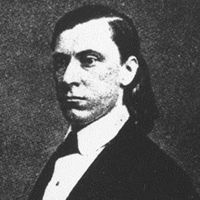
|
|
VITAL STATISTICS
|
BORN: 1828 in Dinwiddie City, VA.
DIED: 1919 in New York, City, NY.
CAMPAIGNS: Williamsburg, Seven Days, Second Bull Run,
Antietam, and Chancellorsville.
HIGHEST RANK ACHIEVED: Brigadier General
|
|
BIOGRAPHY
|
| Roger Atkinson Pryor was born on July 19, 1828, in Dinwiddie County, Virginia. He grew up in Nottoway County, was educated in Virginia, at the Petersburg Classical Academy and at Hampton-Sydney College and graduated from college in 1845 as valedictorian. Pryor studied law at the University of Virginia, and became a lawyer in 1849, while working as editor of "Southside Democrat." In 1853, while maintaining his law practice; Pryor began editing the Richmond "Enquirer." He founded "The South," a sectionalist Washington D.C. newspaper, in 1857, and wrote for a similar Washington paper called "The States." Elected to the US House of Representatives in 1859, he became a political theorist and fervent secessionist . After Virginia seceded, Pryor entered the Provisional Confederate Congress, then resigned to become colonel of the 3d Virginia Infantry. He served at the Battle of Williamsburg in May of 1862, and was promoted to brigadier general to date from April 16, 1862. After taking part in the Seven Days' Campaign, Second Bull Run, and the Antietam Campaign; his regiment was dismantled. Unable to set up an independent brigade, he fought in the Battle of Chancellorsville, then went without an assignment. He resigned in 1863, and served the Confederacy in scouting and intelligence work. Captured in November of 1864, he was held prisoner at Fort Lafayette and exchanged in 1865, before the Confederate surrender. Directly after the war, Pryor moved to New York City and wrote anonymously for the New York "Daily News" until 1866. He practiced law, then was appointed to the New York Court of Common Pleas in 1890. Appointed a justice for the New York State Supreme Court in 1896, he was a referee in the appellate division of the State Supreme Court from 1899 to 1919. Pryor died in New York City, on March 14, 1919. His wife, Sara, wrote about the couple's war experiences in "Reminiscences of Peace and War" (1904). |
|